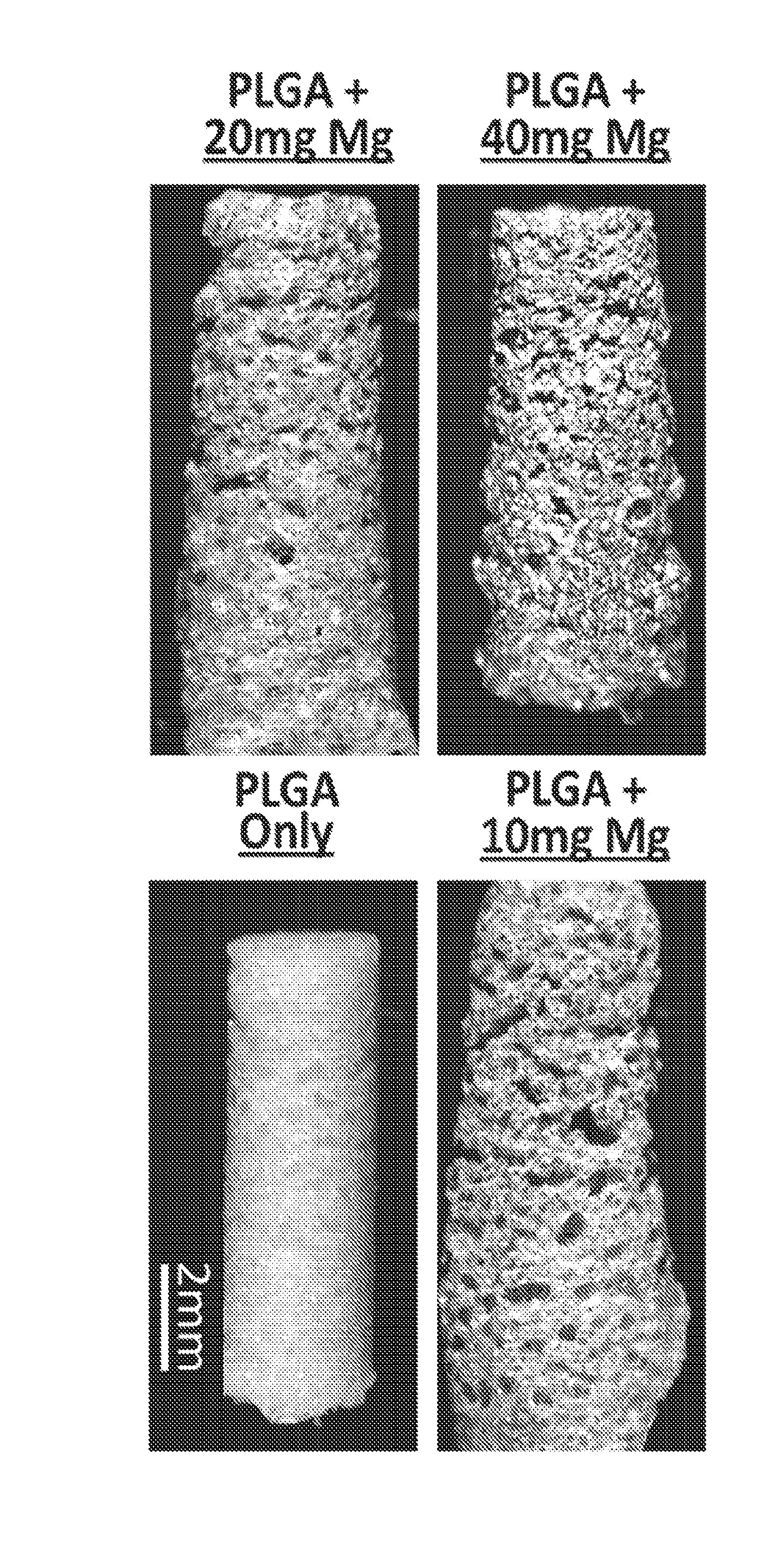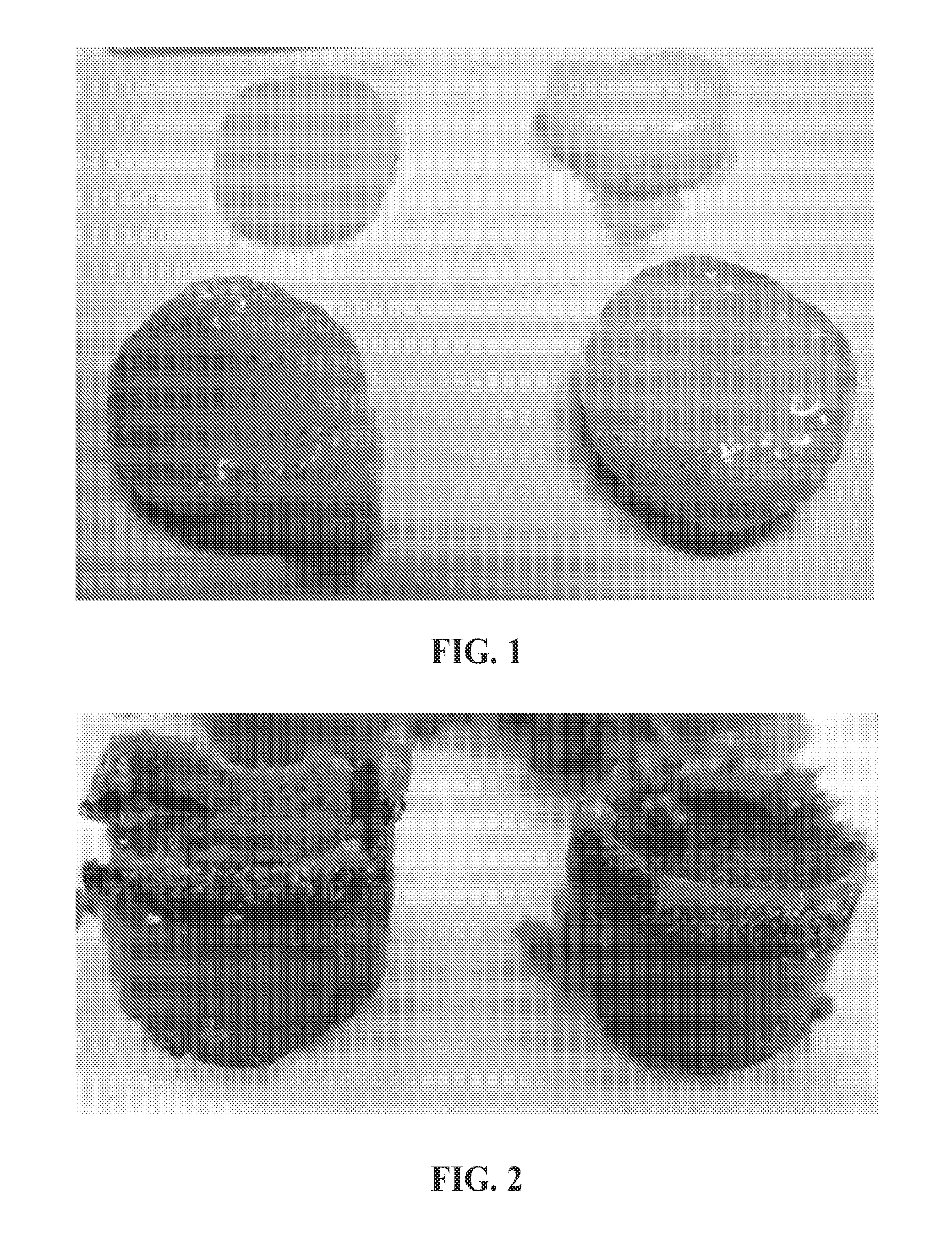Magnesium/polymer composite-containing scaffolds to enhance tissue regeneration
a technology of magnesium/polymer composites and scaffolds, applied in the field of magnesium/polymer composites, can solve the problems of acidic degradation, fixation alone may not be sufficient to regenerate large bone defects and non-unions, etc., and achieve the effect of sustained delivery of magnesium particles
- Summary
- Abstract
- Description
- Claims
- Application Information
AI Technical Summary
Benefits of technology
Problems solved by technology
Method used
Image
Examples
example 1
[0045]A first scaffold was prepared using 40 mg of PLGA, a second scaffold was prepared using a combination of PLGA and 10 mg of Mg powder, a third scaffold was prepared using a combination of PLGA and 20 mg of Mg powder and a fourth scaffold was prepared using a combination of PLGA and 40 mg of Mg powder. The Mg powder was embedded in the PLGA scaffold and varying amounts of porosity were added through a solvent casting / particulate leaching technique. FIG. 3 illustrates these scaffolds and demonstrates the improvement realized by the Mg-polymer composites as compared to the PLGA-only composite) through variation of porosity for tailored tissue regeneration properties.
example 2
[0046]Scaffolds composed of only PLGA and scaffolds composed of a combination of Mg and PLGA were synthesized with varying amounts of Mg powder added, it was shown that degradation of PLGA-only scaffolds in tissue culture medium resulted in a highly acidic pH (that has been shown in the art to be detrimental to tissue regeneration and, drug and protein release in-vivo). The Mg-PLGA scaffolds demonstrated an ability to buffer the acidic degradation of PLGA and maintain tissue culture medium pH at a level that was not cytotoxic. These results were achieved with a Mg powder amount as low as 10 mg in the PLGA scaffold for 10 weeks. Further, it was demonstrated that increasing the amount of Mg powder, resulted in the ability to extend the release of Mg into the medium. FIG. 4 shows media pH data for PLGA scaffolds haying varying amounts of Mg incorporated therein, i.e., 0, 10 mg, 20 mg and 40 mg.
example 3
[0047]Scaffolds composed of only PLGA and scaffolds composed of a combination of Mg and PLGA Were synthesized with varying amounts of Mg powder added. It was shown that the mechanical properties of the Mg-PLGA scaffolds were improved as compared to the PLGA -only scaffolds. FIG. 5 shows plots of maximum strain and stress, modulus and porosity for PLGA scaffolds having varying amounts of Mg incorporated therein, i.e., 0, 10 mg, 20 mg and 40 mg. It was found that adding 40 mg of Mg powder to PLGA scaffolds increased both maximum stress and modulus as compared to PLGA scaffolds in the absence of Mg.
PUM
 Login to View More
Login to View More Abstract
Description
Claims
Application Information
 Login to View More
Login to View More - R&D
- Intellectual Property
- Life Sciences
- Materials
- Tech Scout
- Unparalleled Data Quality
- Higher Quality Content
- 60% Fewer Hallucinations
Browse by: Latest US Patents, China's latest patents, Technical Efficacy Thesaurus, Application Domain, Technology Topic, Popular Technical Reports.
© 2025 PatSnap. All rights reserved.Legal|Privacy policy|Modern Slavery Act Transparency Statement|Sitemap|About US| Contact US: help@patsnap.com



